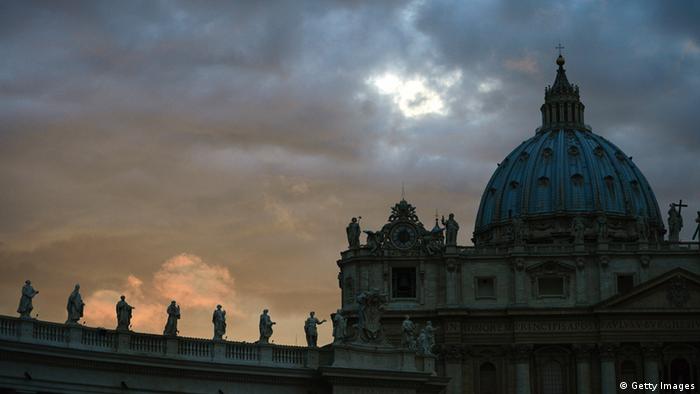Cardinals convene in the Sistine Chapel in the Vatican this Tuesday to begin their conclave to elect the next pope. There's no front-runner or indication how long voting will last.
A total of 115 cardinals from 48 countries - all under the age of 80 - are taking part in the elaborate ritual, which continues until one of them receives a two-thirds majority, or 77 votes, necessary to become the 266th pope.
In the early morning, the cardinals moved into St. Martha's Residence located behind St Peter's Basilica. From there they will ride to the Sistine Chapel each day in a bus with blacked-out windows.
The conclave officially begin with the beginning of mass in Saint Peter's Basilica. The cardinals will then start their secluded assembly in the Sistine Chapel in the afternoon. There they take an oath of secrecy and will be banned from communicating with the outside world, remaining secluded until the new pope has been elected. Some cardinals sent final farewell tweets before the mass and the start of their seclusion.
"Last tweet before conclave: May Our Father hear and answer with love and mercy all prayers and sacrifices offered for fruitful outcome. God bless!" posted South African cardinal Wilfrid Napier.
The cardinals are likely to hold just one ballot in the late afternoon on the first day and up to four on the following days.
After each round of voting the ballots are burned, if the vote was inconclusive chemicals are added to the paper to blacken the smoke. If the smoke emerging from the Sistine chapel's chimney is white, this indicates the pope has been chosen.
Benedict XVI, who abdicated last month, was elected in less than 24 hours in 2005. However, his predecessor, John Paul II, was chosen after three days. The average length of the last nine conclaves was just over three days and none went on for more than five days.
Vatican spokesman Federico Lombardi has said at the weekend that he expected a "short conclave."
No clear frontrunner has emerged since Pope Benedict announced last month that he intended to step down, becoming the first pope since medieval times to do so.
Only 24 percent of the world's 1.2 billion Catholics live in Europe and numbers there are declining. But British betting agencies reckon an Italian, Cardinal Angelo Scola of Milan, has the best chances to be elected. He has managed two big Italian dioceses, but is not part of the Vatican administration and may be able to push through reforms in the Vatican bureaucracy to combat alleged intrigue and corruption.
Latin America accounts for 40 percent of the world's faithful, so some insiders see a cardinal from there, Brazilian Cardinal Odilo Scherer, emerging as a favorite. The leader of Sao Paolo diocese heads the largest diocese in the biggest Catholic country and is seen as a conservative.
New York archbishop Timothy Dolan, Marc Ouellet of Canada, Leonardo Sandri of Argentina, Antonio Tagle of the Philippines and Peter Turkson of Ghana are among the other names mentioned by those who feel it is time for a non-European pope.
Of the 115 electors, 60 are European, 19 from Latin America, 11 from Africa, 10 from Asia and one from Oceania.
Vatican officials have expressed the hope that the new pope could be installed in office before Palm Sunday on March 24 and lead the Holy Week services that culminate in the Easter holiday on the following Sunday.
rg/jm (Reuters, AP, KNA) dw de


No comments:
Post a Comment